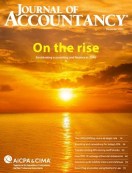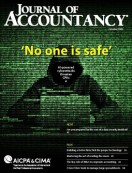- newsletter
- Extra Credit

4 ways to create an inclusive department
Here are big and small ways to evolve from diversity to inclusion.
Please note: This item is from our archives and was published in 2019. It is provided for historical reference. The content may be out of date and links may no longer function.
Related
Why you should use metacognition in the classroom
How to attract more diverse accounting students
TOPICS
Universities use a multitude of strategies to recruit diverse students and faculty to their accounting programs, but getting a more balanced mix of cultures, ethnicities, and viewpoints on campus is just the first step. To truly support and grow diversity, institutions have to create an environment where people from diverse backgrounds also want to stay and grow.
Inclusion can be defined as “providing a psychologically safe environment that fosters fairness with respect to the different types of diversity,” said Oscar Holmes IV, Ph.D., assistant professor of management at Rutgers University in Camden, N.J.
And it’s a crucial part of making the accounting profession more diverse.
“Inclusion is very critical in the context of accounting for one main reason: representation,” said Atira Charles, Ph.D., assistant professor of management at Florida A&M University in Tallahassee. If people of diverse backgrounds don’t feel welcome in the profession, “then retention becomes an issue, which makes the goal of representation difficult,” she said.
“Many organizations focus on getting the right ‘mix’ of folks, but don’t know what to do with them once they are there. This has to be the new focus of diversity and inclusion efforts,” she said.
Charles, Holmes, and other professors shared several tangible ways to create a more inclusive environment on campus:
Ask students how they would prefer to be addressed. Every time Holmes sends a message from his Rutgers email account, he’s sending a short but powerful message of inclusion within his signature, which, along with his phone numbers and Twitter handle, lists his preferred pronouns: he, him, his. These three tiny words go a long way in affirming that he and his classroom are supportive of various gender expressions.
On the first day of class, Holmes also asks students to share their own preferences, whether they’re related to pronouns or the name they prefer to be called.
“This not only makes LGBTQ students feel more accepted and respected, but also international students, and students who either do not like their legal name or whose name is often denigrated and/or mispronounced,” Holmes said. “This sends a strong signal of respect and attentiveness to my students (and to people who get emails from me).”
Learn about diverse groups. See what formal opportunities your school provides for better understanding different groups of people. At Rutgers, for example, the Office of Diversity and Inclusion offers a simple online form to request a training session for groups of all sizes in the areas of cultural competency, unconscious bias, religious pluralism, and LGBTQIA+ (lesbian, gay, bisexual, trans, questioning, intersex, and asexual) topics.
Not all colleges will have training modules at the ready, so faculty can also tap into crowd-sourced reading lists online (a quick Google search will call them up) to grow their knowledge of social challenges people of color and LBGTQIA+ people can face, Holmes said.
Use outreach programs to build a more diverse student body. Building and sustaining diversity is a critical step to creating a more inclusive campus, Holmes said. To this end, many business schools and accounting departments have expanded their student recruitment by building their own talent identification programs on campus for high school students.
At Rutgers, for instance, Holmes founded the Rutgers University Student Executives to introduce high school students from historically underrepresented backgrounds to the idea of pursuing a business career. The program is now in its second year and has already involved more than 50 students, several of whom will graduate from high school and attend Rutgers in the fall, intending to major in business professions that include accounting.
Such programs are important, Holmes said, because they “provide students with valuable professional development, socialization, social capital, and tacit knowledge that allows students to take advantage of many opportunities that might otherwise be elusive to them.”
Recruit, mentor, and grow underrepresented faculty. Building a diverse faculty is also key to creating an inclusive environment for students, said Charles. At Florida A&M University, an HBCU, most of the accounting faculty are multicultural. This benefits the school’s diverse student body, as “the students see themselves in their professors, which also promotes self-esteem, confidence, and success,” she said.
Both Holmes and María T. Cabán-García, CPA, Ph.D., associate professor of accounting at the University of South Florida St. Petersburg and a member of a diversity and inclusion committee that advises the chancellor, recommend that departments connect with programs such as The PhD Project.
The PhD Project has helped almost 1,200 African-American, Hispanic-American, and Native American people earn a Ph.D. and become professors in business disciplines. (Holmes, Charles, and Cabán-García are all alumni of the program.) The project offers opportunities for collaborators and sponsors to recruit alumni for teaching positions and hosts a database where sponsoring institutions can post job openings.
Universities can also help expand the pool of diverse faculty members by offering fellowships to graduate students from minority backgrounds, such as the Minority Postdoctoral Fellowship Program at the University of South Florida, Cabán-García said.
Holmes also points to literature that suggests cluster hiring, or hiring a group of faculty with related but interdisciplinary focuses, has helped some universities increase diversity.
It’s not enough, however, to recruit faculty from diverse backgrounds, Holmes said. They will stay in an environment that supports them, where they receive mentorship and feel supported to continue their professional growth. Ways departments can do that, he said, include creating a fund where they can submit proposals for research and travel grants, tracking their service assignments to make sure they are not being overworked, and paying competitive salaries.
All of these efforts to build diversity and create inclusion in accounting departments are investments in the future of the profession, the professors agreed.
“Diversity increases performance — it’s proven through research at this point,” Charles said. “However, diversifying the pipeline takes deliberate focus that includes putting resources and social capital behind great diversity and inclusion efforts.”
Samiha Khanna is a freelance writer based in North Carolina. To comment on this article or to suggest an idea for another article, contact Courtney Vien, a JofA senior editor, at Courtney.Vien@aicpa-cima.com.



















